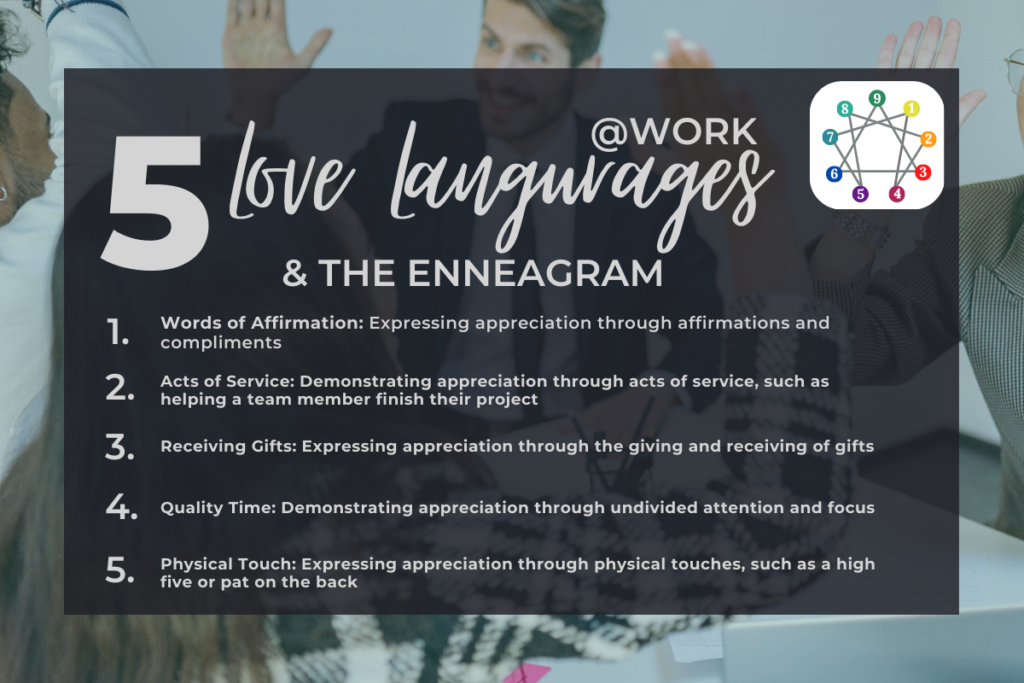Who doesn't want to be better, smarter, and more efficient? Exactly! We're all looking for that magic potion to create a productive, dynamic, and collaborative environment. Want to unlock your potential through understanding your Enneagram type? Read our blog!

First, let’s address the big tension around quarterly reviews: Do they really matter?
Coach Kelsey here: Of course, they matter! It never occurred to me, prior to a recent Google search, that people would think otherwise. But upon reading how some companies approach their quarterly reviews, namely by putting their employees in a box and stifling their creativity, I get it! I’ll do my best to check my bias here – but I do believe that reviews should be done quarterly. More importantly, I believe they can be done in a way that energizes your team.
Why do I need to do quarterly reviews? Isn’t one review at the end of the year enough?
Think of your company like a car. There are some things you do daily, weekly, monthly, quarterly, and annually to ensure the overall “health” of your car. Daily, weekly, and monthly tasks include cleaning out the car, putting gas in it, and washing it. (Coach Kelsey here: These are excellent jobs to delegate to your kids.) Depending on how much you drive, you likely change the oil quarterly, and then, of course, you have the annual registration and inspection.
Like cars, companies require our attention daily, weekly, monthly, quarterly, and annually. If you only change the oil in your car once a year, it won’t be long before your vehicle malfunctions. The same is true if you are not participating in quarterly reviews. It is a matter of time before problems (that could have been prevented) surface.
The REAL purpose of a quarterly review.
Myth: The Purpose of the Review is the Assess the Team Member
Fact: The Purpose of the Review is the Assess the COMPANY
The purpose of a quarterly review is to assess and evaluate the performance, progress, and overall health of a company (not just the individual) during a specific three-month period. Now, that’s not to say that we do not address the individual’s performance in the review – that is undoubtedly an element of the review, but it is NOT the overall purpose. I’m not sure where we got this wrong, but we need to PIVOT away from the idea that the individual is the focal point of the quarterly review.
What is a good format for a quarterly review?
The format of a quarterly review may vary depending on the specific needs and preferences of the company or individual conducting the review. However, here is a general framework that can be used as a starting point:
- Introduction and Overview – Begin the review with an introduction, setting the context for the review and its purpose. Provide a brief overview of the previous quarter’s goals and objectives.
- Progress and Achievements: Summarize the progress made towards the goals and objectives set for the quarter. Highlight key achievements, milestones, and successful outcomes. Share specific examples or data to support the progress and accomplishments.
- Performance Evaluation: Assess individual, team, or departmental performance against the predetermined goals, targets, and KPIs. Analyze the strengths, areas of improvement and any challenges faced during the quarter. Tip: Use both quantitative and qualitative measures to evaluate performance.
- Lessons Learned and Opportunities: Discuss the lessons learned from the previous quarter, including successes and failures. Identify opportunities for improvement and growth based on the experiences and outcomes of the quarter. Propose strategies or actions to capitalize on the identified opportunities.
- Goals for the Next Quarter: Set specific, measurable, attainable, relevant, and time-bound (SMART) goals for the upcoming quarter. Align the goals with the overall strategic objectives of the company.
- Action Items and Follow-up: Identify specific action items or tasks that must be undertaken to achieve the defined goals. Assign timelines for each action item. Discuss any necessary support, resources, or training to execute the action items effectively.
- Conclusion and Next Steps: Summarize the key points discussed during the review. Coach Kelsey here: You will be tempted to skip this step because it feels redundant. However, this step is crucial to ensure everyone is on the same page. Most errors with fast food orders are prevented with a simple “let me repeat your order back to you.”
Remember, this is a general framework, and you are in charge! That means you can and should customize the framework according to your organization’s needs and priorities.

How long should a quarterly review last?
On average, a quarterly review can range from 1 to 2 hours, but it can be shorter or longer depending on the needs and dynamics of your organization. It’s essential to strike a balance between providing sufficient time for meaningful discussion, analysis, and reflection while avoiding disengagement or fatigue.
To make the most of the allocated time, consider the following tips:
- Make an agenda. No one likes meeting with a nebulous purpose.
- Prioritize the top 3-5 key discussion points.
- Use visual aids to help communicate complex information more efficiently.
- Schedule a follow-up meeting for topics that require more in-depth discussion or analysis.
Optimize your reviews by understanding different personality types.
To truly optimize the review process, it’s essential to consider diverse personality styles. Tailoring the review approach to align with their unique characteristics can enhance engagement, communication, and overall effectiveness.
While there are several different personality typing systems, we will be taking a deeper look at the different ways to encourage your team members according to their Enneagram Type. The Enneagram is a personality system that categorizes individuals into nine distinct types, each with its motivations, strengths, and areas for growth.
Let’s be honest; getting everyone on the same page with personality assessments is stressful and time-consuming. At the Working Enneagram, we make the process fun by hosting engaging team trainings that have your team saying, “We wanted more!”

Here are strategies for running an effective quarterly review that resonates with each Enneagram type and personality style, fostering a productive and harmonious work environment.
- Provide clear guidelines, expectations, and standards for the review process.
- Affirm them for their accuracy, detail, and adherence to established protocols.
- Be aware of their tendency to be overly critical of themselves and others.
- Acknowledge and appreciate the efforts and contributions of the team.
- Encourage them to express their own needs and concerns in addition to focusing on others.
- Be aware of their tendency to overextend themselves for the sake of earning appreciation from others.
- Recognize and highlight the accomplishments and successes of them and their team.
- Encourage a balance between results-oriented focus and acknowledging personal well-being.
- Be aware of their tendency to want to impress you with their accomplishments or compare themselves to others.
- Recognize and appreciate their unique differentiators.
- Encourage them for their positive accomplishments rather than dwelling on perceived shortcomings.
- Be aware of their tendency to feel inadequate or lacking in skillsets/capabilities.
- Provide ample time for preparation and gathering of information before the review.
- Respect their need for privacy and autonomy.
- Be aware of their tendency to reject emotion and fixate on information and logic.
- Create a supportive and reassuring environment that addresses concerns or anxieties and encourages them to voice their opinions and concerns openly.
- Provide clear explanations and rationale for decisions and actions.
- Be aware of their tendency to oscillate between confidence and self-doubt.
- Keep the review engaging and dynamic to maintain interest
- Encourage them for their optimism, joy, and creativity.
- Be aware of their tendency to lose interest or tell stories to support their ideas
- Encourage the Type 8 to provide candid feedback and speak their mind.
- Affirm them for their strength, discernment, and leadership.
- Be aware of their tendency to be direct and push back or challenge you.
- Encourage the Type 9 to express their own thoughts and opinion.
- Keep the review process structured to avoid drifting into unrelated topics.
- Be aware of their tendency to go along with whatever everyone else wants to keep the peace.
Keep in mind these are general suggestions, and individuals may vary within their Enneagram type. It’s crucial to adapt your leadership approach to the specific needs, strengths, and growth areas of each team member to create a productive and inclusive quarterly review process.


